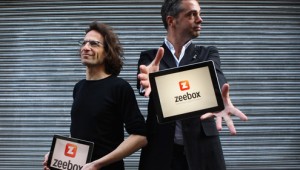* Anthony Rose has been inventing since his teens. Having been hired by the BBC to execute the iPlayer and now having launched the Zeebox, Monty’s Outlook catches up with him for a look at his Little Grey Cells:
 Good digital design is all about:
Good digital design is all about:
Creating propositions that fulfil their audience’s need, are easy for the man in the street to understand and use, and that never make you feel foolish or frustrated.
I got into technology when I was about 12 years old:
I made a hot belt surface mount reflow machine and a robot pick-and-place machine. It was a robot system to assemble circuit boards with miniaturised technology – probably not something the average school kid had in his bedroom.
I designed circuit-boards for Panasonic and Apple. I made ones that were explosion-proof and that could go down coal mines, and I made consumer electronics. I formed my own one-man company – and then at some point, I figured I needed to grow the company or figure out something else to do.
Maybe I was tired of getting my hair burnt with the soldering iron, but a friend said there was an opportunity to get into real-time 3D graphics, and put together a software team making interactive movies, for the SEGA platform.
In the 1990s I decided to switch from hardware to software. I have been in consumer media propositions since then. First with real-time 3D graphics, then with a digital music store, then Kazaa, then with BBC iPlayer and now on Zeebox. Continue reading